
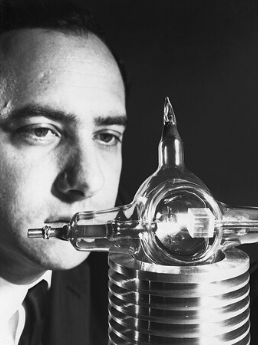
On May 16, 1960, Theodore Maiman (shown left) produced for the first time a new kind of light, not found in nature, and changed the course of history. Until that day, researchers studying the behavior and science of light had relied on stars, the sun, candles, and electric lamps to provide illumination. Each of these sources involve a large collection of atoms or molecules that release stored energy independently and at random, in a process called spontaneous emission. Maiman, however, had managed to coax the atoms in his new device into emitting their light in a coordinated way, in which the emission from one atom coaxes others to emit as well, in what is known as stimulated emission. This was the birth of the LASER – Light Amplification by Stimulated Emission of Radiation. Maiman’s demonstration of a working laser would revolutionize science and society in ways that were previously unimaginable. Lasers are now used in an astonishingly diverse range of tasks, from bar code scanners at supermarkets to medical imaging and surgery to precision industrial measurement and fabrication to conveying most of the information on the internet. In this year, the sixtieth anniversary of the laser’s invention, it is worth looking again at the history and science of this remarkable invention and some of its long-lasting implications.
The laser was not the spontaneous creation of a single person, but rather the culmination of decades of scientific observations and ideas. Laser operation is an inherently quantum phenomenon, based on the recognition that light is emitted and absorbed by atoms in discrete bunches of energy called photons. The first hint of photons was introduced by German physicist Max Planck in the year 1900, in his attempts to explain the observed properties of what is known as blackbody radiation. When an object, like the heating element of an electric stove, is made sufficiently hot, it begins to glow, and the spectrum (colors) of that radiation depend in a very specific way on the temperature of the element. An idealized version of such a heated glowing element is known as a blackbody, and researchers in the late 19th century struggled to explain the observed spectrum of blackbodies. Planck finally derived a mathematical formula that matched perfectly with the experimental data, but he did it by assuming that light can only be emitted by the blackbody in discrete amounts, or “quanta,” of energy. Planck treated this as a property of the material, not of light itself, but this was the first hint that light in fact exists as particles.
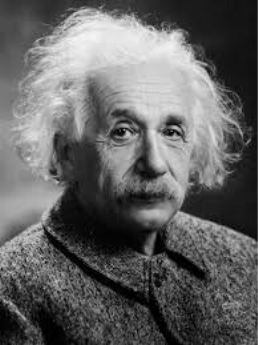
In 1905, it was none other than Albert Einstein (shown right) who publicly hypothesized the existence of photons. Researchers had puzzled for years about the photoelectric effect, in which it is observed that electrons can be ejected from the surface of a metal plate by light under the right circumstances. Physicists, working under the assumption that light has only wave properties, were unable to explain the observed properties of the photoelectric effect; Einstein managed to explain them all simply and concisely by suggesting that light possesses both wave and particle properties. This sparked the recognition of wave-particle duality in physics, in which both light and matter share properties of both waves and particles, and led to the establishment of quantum physics.
Einstein spent the next few years working on his theory of general relativity, an extension of his theory of special relativity that he also introduced in 1905. But in 1917, he returned to the problem of photons and how they are emitted from atoms. In a paper titled, “On the quantum theory of radiation” (English translation), he introduced the idea that atoms may interact with photons in three distinct processes: absorption (an atom absorbs a photon and gains energy, becoming “excited”), spontaneous emission (an excited atom emits a photon unpredictably and loses energy), and stimulated emission (an excited atom is coaxed into emitting a photon by another photon, losing energy). Among other insights, Einstein was able to show that this model of light-matter interactions leads directly to Planck’s formula for blackbody radiation.
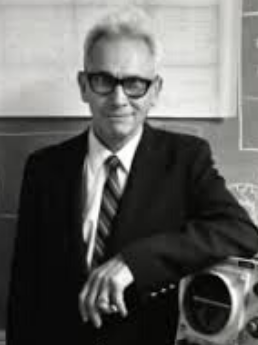
With the introduction of stimulated emission, all the needed physics was in place for the invention of the laser, but it nevertheless took several decades for the idea to take hold. The first step came from microwave researchers. In 1952, Dr. Joseph Weber, (shown left) a newly-minted PhD from the Catholic University of America, presented a talk at the Electron Tube Research Conference in Ottawa on his idea to use stimulated emission to amplify microwave signals. In essence, stimulated emission can be used to create an “avalanche” of synchronous photons, with a small number of photons triggering the cascade, much like a small number of rocks can start a rockslide.
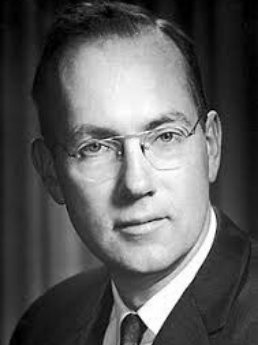
Among the attendees of the meeting was Charles Hard Townes, (shown right) a professor at Columbia University. Townes asked for a copy of Weber’s paper, which introduced ideas similar to those he had been working on himself. By 1953, Townes and his graduate students James P. Gordon and Herbert J. Zeiger had produced the first operating MASER (Microwave Amplification by Spontaneous Emission of Radiation), a device that could emit pulses of synchronous – usually referred to as “coherent” – microwave photons. Townes coined the acronym “maser,” from which of course the more familiar “laser” would eventually be derived.

But good ideas in science are formed not just by individual creativity but by the work that was previously established by others, and often several researchers can independently make the same discovery in a very short period of time, once all the pieces are in place. While Townes was building a maser in the United States, Nikolay Basov and Aleksandr Prokhorov (shown left) in the Soviet Union were successfully developing their own version, which could put out a continuous beam of microwaves rather than a sequence of pulses.
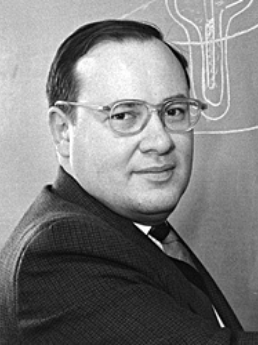
The introduction of the maser led to a flurry of publications in scientific journals on the subject, documenting their properties and variations on the idea. But many of the original researchers, such as Townes and his colleague Arthur Leonard Schawlow (shown right) at Bell Labs, turned to making a device that could operate for visible light, which was first referred to as an “optical maser.” The challenge in making the new device would partly be one of size: microwaves have a wavelength of around 1 millimeter, whereas the wavelength of visible light is about 1000 times shorter; as the devices have to be designed with a precision comparable to a wavelength, this gives an idea of the relative difficulty in making the new device. Nevertheless Bell Labs filed the first patent for the optical maser in 1958. Around the same time, Prokhorov was developing his own optical device, and a PhD student at Columbia named Gordon Gould had also published his ideas for what he now called a “laser.”
But Theodore Maiman, working at Hughes Research Laboratories, managed to create the first working prototype ahead of the others. It used a synthetic ruby crystal as the medium for stimulated emission, and produced pulses of red light. After this achievement, the other research groups managed to produce similar devices, and the era of the laser was born.
Like a lot of groundbreaking discoveries, the laser met with some initial resistance from the scientific community. Charles Townes has noted that his early theoretical ideas about the laser were met with skepticism by many of the best physicists of the era. Theodore Maiman infamously got his first paper on the laser rejected by the prestigious journal Physical Review Letters; he instead managed to get it into the journal Science. The news media looked on the invention with equal parts of excitement and trepidation, often with lurid headlines and somewhat dystopian visions of the future. For instance, a syndicated article by Ralph Dighton that appeared in the October 2, 1960 edition of the Independent-Star News led with the headline “Death ray possibilities probed by scientists: Satellite with ray could control Earth.” He begins with:
“A GIANT magnifying glass orbiting the earth, setting cities ablaze with the focused rays of the sun.
“The science-fiction super weapon is a toy compared to what some envision from a new development in the field of science.”
Doomsday possibilities aside, the laser caused more immediate trouble in the realm of patent law. Gould had filed a patent for the laser just as Bell Labs had, but Gould’s claim was rejected in favor of the latter. This led to a 28 year long lawsuit that finally ended with Gould being awarded credit for several types of laser designs.
So, we raise a glass to the pioneers – Townes, Schawlow, Basov, Prokhorov, Weber, Gould, Maiman and Einstein – who gave us this scientific and technological revolution. And, to close, we note that we could also probably make a laser out of our drink, as well.

Latest Comments
Have your say!